MTA’s Pres of Construction Gives Wide Ranging Interview on Penn Station Rebuild Plans
Jamie Torres-Springer, president of MTA Construction and Development sat down for a wide ranging interview at MTA HQ on where the efforts to hammer out a plan to rebuild Penn Station stand. As the following Q&A shows, it is a plan with many moving parts and stakeholders, from the commuter railroads that use Penn Station, to Amtrak which owns the below ground station to Madison Square Garden, which sits atop the rail hub.

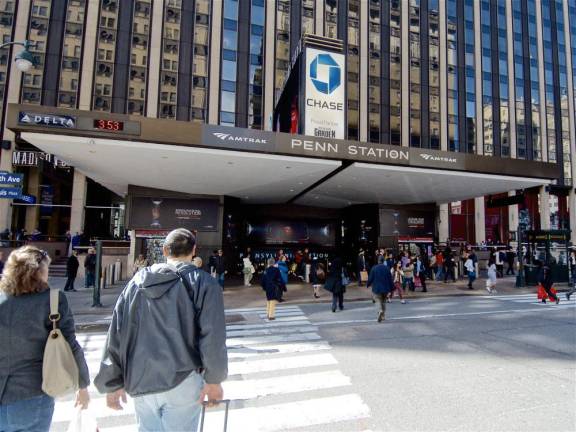
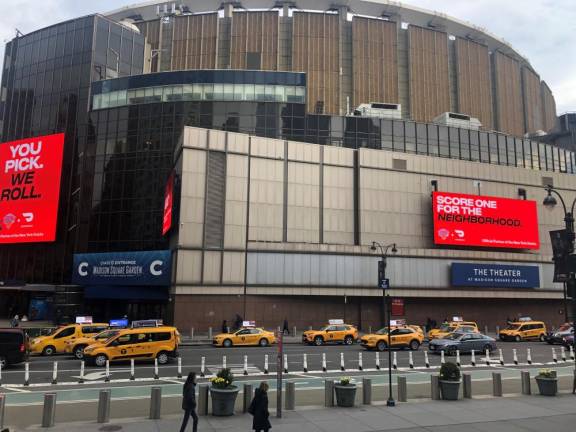
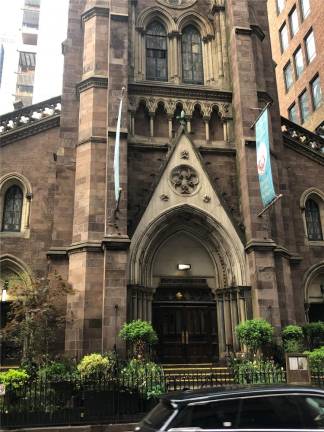
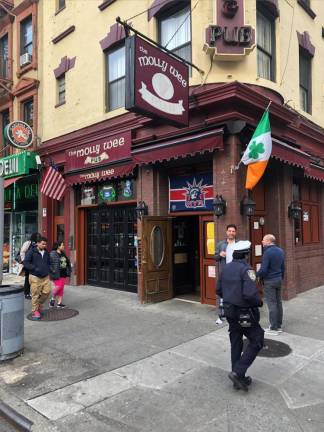
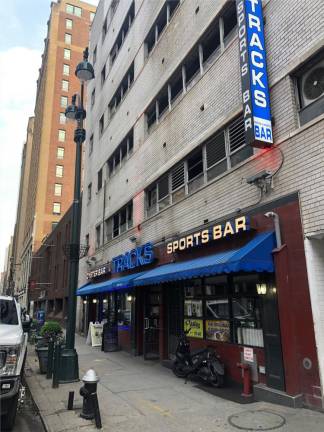
It is one of New York City’s most complex public building challenges ever. Improving the dismal Penn Station, with options constrained by the presence of it’s neighbor above, Madison Square Garden. The MTA, which runs the Long Island Railroad and Metro North is leading the reconstruction project on behalf of Penn Station’s owner, Amtrak and its other major user, New Jersey Transit. The questions pile one on top of another, much as Madison Square Garden is piled atop the cramped station and the even more cramped platforms. The City Council will decide this month whether to give The Garden a new permit to operateits 20,000 seat arena above the station and under what terms. An Italian developer says it has a $6 billion plan for reconstructing Penn Station that will be both better and cheaper than the MTA’s $7 billion plan, even though ASTM would pay Madison Square Garden half a billion dollars for some of its property, which the MTA does not want to do. In the meantime, community and planning activists have stepped up their effort to get the three railroads to reconsider their separate but related plan to expand the terminal to the south, taking down an adjoining block, to make way for more trains from New Jersey after a new Hudson river tunnel is finished. Straus News sat down with the official in charge of rebuilding Penn Station, Jamie TorresSpringer, President of MTA Construction and Development. In a wide ranging interview Torres Springer said he was skeptical of the Italian firms cost estimates. “Its not putting a finger in the air based on some Starchitect drawings,” he said. He also said he believed it was unlikely that the railroads could replace expansion of PennStation by running LIRR and NJ Transit trains through Penn Station instead of terminating ther. e. Andy Byford, the one-time head of NYC’s subways and buses who now works for Amtrak created a stir with recently by floating the idea of “through running” trains. “We just don’t have the space,” Torres-Springer said of the station’s tracks and platforms. But on both the question of how Penn Station should be rebuilt and whether or how it should be expanded, Torres-Springer stressed the MTA was studying everything and open to hear all proposals, so long as the end result was a better and safer Penn Station. Here are excerpts from the conversation.
Straus News: The last time our readers heard from you was your testimony at the City Council in which, among other things, you said you thought the Council shouldn’t grant a new operating permit to Madison Square Garden until you’d been able to reach an agreement with the Garden on what they needed to do to support Penn reconstruction. Where does that stand?
Torres-Springer: It stands were it stood then. We haven’t heard a word from Madison Square Garden. We’re awaiting that.
Straus News: The Council doesn’t seem likely to wait for that to happen?
Torres-Springer: It’s up to them. the city both through the Planning Commission and through the Council have asked the railroads to help to understand what it would take to make the arena compatible with the station. We’ve given them that information. We can talk about the specifics of what those things are. They’re not particularly difficult things to achieve. So if the question that they’re asking us is, ‘has Madison Square Garden done anything to come to an agreement with us that would insure compatibility?’ the answer is, no. They’ll have to decide what the implications of that are for the process.
Straus News: It seems that there were a series of specific issues like the taxi way, like the space around the Eight Ave entrances, but in the end the biggest sticking point seemed to be whether or not Madison Square Garden would be paid for that property.
Torres-Springer: You know, honestly, I’m not sure what the biggest sticking point is for them. Because, unfortunately, what we’ve heard from them is an unwillingness to engage. What they’ve said publicly [is], ‘we don’t think there’s enough information that we could even say whether or not the taxiway and the Eighth Avenue entrances are things that we ought to convey to become part of the project’. We have a master plan. You guys cover lots of land use actions. Developers and owners all the time make commitments during land use actions at the conceptual level.... I think there are lots of ways of us figuring out how to do something that’s in the public interest, that also provides benefit to Madison Square Garden. Or doesn’t cost them anything. But we haven’t heard anything from them.
Straus News: The Italian developer, ASTM, has gotten a lot of attention for their proposal to rebuild Penn Station and have asked the railroads to issue a Request for Proposals in which they could bid to be the overall developer in a public private partnership with the railroads. That is different from the RFP you’ve talked about?
Torres-Springer: There is a lot of dialogue that is confusing a lot of these issues. Led by Governor [Kathy] Hochul, we have a master plan, all three railroads, for the reconstruction of Penn Station for its predominantly seventh avenue, 600,000 daily riders ...We are proceeding with that reconstruction project. We are in what’s called preliminary design. And when you do preliminary design–the station is enormously complex–we have a lot of work to do. When your done with that work, then you go out to seek your contractor, or your builder in an RFP process. We haven’t determined the best way to deliver yet. The RFP could be design/build. It could be p3 [Public Private Partnership]. It could be design then build. There will be that RFP that comes out at that stage. And that’s how the project will get built after we are through that preliminary stage of design.
Straus News: So the version they’ve proposed is one of several possibilities?
Torres-Springer: We would welcome their responding to our RFP when we’ve advanced designs sufficiently. ASTM is a private equity firm based in Italy, but that owns a contractor called Halmar. Halmar is a very good contractor for us.
Straus News: they’ve done other work for you?
Torres-Springer: Oh, yea. They are building Metro North Penn station access for us. They very successfully delivered the third track project to Long island. They are rebuilding the Park Avenue viaduct for us. They’re doing our first p3, which is the improvement of ADA stations that we awarded them at the end of last year. So when we come out with an RFP, or some sort of procurement to proceed with rebuilding the station, we welcome them to respond. Andthere are opportunities there–this is really the new MTA, and how we deliver more efficiently—for the contractor to come back and say we think you could do things differently. We think you could do it this way. We think you could do it that way. You could finance it differently. And then we get to take advantage of that. I have no idea where their cost estimate comes from. I see no information about it other than them coming out in public and saying it will cost $6 billion not $7 billion. But if its really true they can save us a billion dollars that’s great. And we really welcome them to enter the competition to deliver the project.
Straus News: One of the biggest differences in cost estimates seems to be their argument that you don’t need to rebuild that bridge that runs above the taxiway and brings fans from Seventh Avenue into Madison Square Garden.
Torres-Springer: I’m really not sure. I don’t know anything about their cost estimates. They allege that they are building our plan exactly. There has been some talk about not rebuilding the bridge. But then adding this Hulu Theatre, which is a billion to two billion dollars. By adding that it significantly increases the cost .... when we produce a cost estimate we have to do it to meet the requirements of the Federal Railroad Administration. It’s a serious business. Its not putting a finger in the air based on some Starchitect drawings. We have to include the cost of all the track outages. The flagging. The support. We have program management and project management. We have to make sure all those things are in. I suspect you’re seeing an estimate from a group that hasn’t included all those things.
As to the bridge. The governors vision and the vision of the three railroads is a vision that focuses on improving Penn Station for the majority of the people who use it. We look a the whole Penn precinct. 70 percent of riders are on the seventh avenue side of the station. Another 30 percent are on the eight avenue side. Only 15 percent are coming into Eight avenue or leaving from Eight avenue. The other 15 percent are using the A, C and E Eighth Avenue lines. And those users to the extent that they’re using Amtrak trains already have Moynihan train hall. So our focus has been on the Seventh Avenue side of the station. Creating a midblock train hall in that location, with the soaring height and natural light, is a huge opportunity for us to better serve those passengers and also to make the station more safe. Because this is all about making sure we can contain smoke in an emergency and maintain a tenable concourse. It means you need vertical height for smoke to rise into so that people have time to egress from the station. So all of that is going into this midblock train hall concept.
And yes our master plan has us rebuilding the chase square bridge which sits in the middle ofthat train hall. If we are going to spend money -- precious public dollars -- on improving PennStation we want to focus that energy on the Seventh avenue side. That’s why that’s our plan.But we are further evaluating it as we move through design.
Straus News: Are you also further evaluating ASTM’s proposal to buy the hulu theathre from Madison Square Garden and demolish it to create a grand entrance and train hall on Eight Avenue?
Torres-Springer: Yes, we will look at Eighth Avenue entrances. We will also look at loading which is a very important question. MSG is really loading either on the public street or in view of the public street. And our plan has an indoor loading facility within it. And we are going to look at that further and make sure that we’ve got the best possible plan for loading.
Straus News: One of the biggest flashpoints has been block 780 which is one of the complexities. It is yet a third issue. Demolishing the block south of Penn Station to make way for an expanded terminal for New Jersey Transit. Can you say a little but about Penn expansion and through running and where you see that at this point.
Torres-Springer: I would really recommend talking to Amtrak about that. Just as the MTA has the majority of the current riders of penn station–long island railroad riders and subway riders–and so we are somewhat managing acting on behalf of the group of three railroads on Penn reconstruction. I think Amtrak and New Jersey Transit are doing something similar on the expansion. Because the expansion is really going to serve those riders. I mean we are partners in this. We support doing the work in the same way they support doing the work that we are doing in Penn reconstruction. But that’s a good question to ask them, just to pursue it slightly.
Advocates have argued that running trains through the station would alleviate the need for expansion and the destruction of block 780. Through running involves New Jersey Transit, obviously. But it also involves the Long Island Rail Road and potentially even Metro North. It depends what you mean by through running. We are doing a study to look at alternatives for through running that should be done soon....We’ve been looking at those questions of whether through running is viable through the existing station or whether it really is more appropriate to achieve it through an expansion of the station.
Straus News: So the 2017 study that was recently reported was actually a piece of this larger study?
Torres-Springer: Right. It was a white paper of sorts that was done as part of this master plan for Penn Reconstruction and it gave us some helpful preliminary insight. But as you said we are into enviornmental review under the federal NEPA standards and that we are doing a fuller study building on that analysis that was done.
Straus News: how would you characterize the prelimary findings of that report.
Torres-Springer: I will say the report in a preliminary way determined that there was not really a viable path to building out the existing station for through running. But we are going to confirm that through this more rigourous study. Its about the limitation on the amount of track we have and the size of the platforms. To bring trains in and through in more of a through running mode you just need more room for passengers to wait on platforms, board and alight the trains. We just don’t have that space. Penn Station was built for 200,000 riders and it’s carrying 600,000 riders a day. We are trying to improve the experience for those 600,000 riders. Adding more riders and more capacity is really challenging. Its not just about Penn Station it’s also about what leads into Penn Station from both sides. The East River tunnels. What’s underneath Manhattan. Where you go under the Hudson. There is a real feasibility limitation on expanding the capacity of existing Penn. That I think leads us to the likelihood that it’s the expansion where you could do more train movements like that. But as I said we are researching it. We’re studying it and we’ll be out with something. ....It’s the same three railroads doing it together but its under an environmental review contract.
Straus News: Would moving the Garden allow you to do things you couldn’t otherwise do by pulling out presumably many of the columns that run down to the platforms and support the arena?
Torres-Springer: I’m really a little out of my depth here. But I really don’t think so. The Gardens columns are a problem. But it’s sort of marginal compared to the bigger capacity problems we have in the existing train shed.
Straus News: The public is often confused by all the intersecting and overlapping elements of this situation.
Torres-Springer: There are a lot of moving parts. But our guiding star here is: we have 600,000 people every day in the rabbit warrens of Penn Station having an uncomfortable experience that is not safe. And so we are laser focused on improving the existing Penn Station. You areright, there are lots of other things going on. But we are designing the improvements. We aredoing the environmental review and we are moving to actually getting work done before 2027when metro north penn access comes into penn and its going to be more difficult for us to getthe outages that we need to work. That’s what we are about at the MTA. We are doing it in partnership with the railroads. So we just stay focused on that.
“Our guiding star here is: we have 600,000 people every day in the rabbit warrens of Penn Station having an uncomfortable experience that is not safe. And so we are laser focused on improving the existing Penn Station.” Jamie Torres-Springer, President MTA Construction and Development